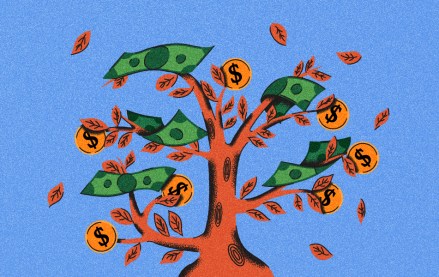
This article is a WTF explainer, in which we break down media and marketing’s most confusing terms. More from the series →
The land grabs started roughly four years ago, when YouTubers began pulling in real money. Almost overnight, organizations sprung up around the booming Web video economy, with major tech and entertainment executives peeling off to start or join a digital video network. Their pitch to creators: Turn your video-making hobby into a lucrative career.
Today, they’re called multichannel networks, or MCNs. Similar to how United Artists led Hollywood talent to wrest control of their livelihood from a rigid studio system, MCNs help deft, young creators navigate and profit in a complicated digital landscape. Here’s what that entails:
WTF is an MCN?
MCNs collect and represent talent — folks with popular YouTube channels — and package them for advertisers in exchange for a slice of their income. Offerings differ across each MCN, but they tend to help creators build and share audiences, provide access to production resources and seek sponsors for branded content opportunities.
Who can join an MCN?
Anyone with a sizable YouTube following, basically. Some MCNs are focused on specific content areas. Machinima is centered on gaming culture, DanceOn around the dance community. Other MCNs have a more general array of content. There’s a lot of variation in size and exclusivity, too: A network like Fullscreen serves up 4 billion video views each month across its 50,000 video makers, while Collective Digital Studio draws 1.5 billion monthly views with just 700 creators, which implies the average Collective DS creator has a significantly larger following.
That’s a big gap. What does that entail for folks who sign up?
It means smaller MCNs like Collective DS can pay more individual attention to their creators. Larger MCNs rely more on their creator platforms, where members can access a suite of audience generation and monetization tools. Fullscreen is hands-on with its top members, like comedy duo The Fine Brothers, which have over 10 million YouTube subscribers. At that level, artist management and sponsorship sales become a much more substantial part of the relationship.
What do brands get from working with MCNs?
While YouTube doesn’t own or endorse MCNs, they tend to be trustworthy sources of high-quality YouTube content. Working with an MCN takes a lot of the legwork out of finding relevant channels on which to advertise. MCNs also facilitate branded-content opportunities with top YouTubers.
So MCNs are completely dependent on YouTube?
YouTube is a huge piece of the MCNs’ audience generation and monetization strategy and will be for the foreseeable future. But the top MCNs are becoming broader media entities less dependent on a single platform. Defy Media, for example, represents YouTube comedy group Smosh, which inexplicably has close to 19 million subscribers on the platform. But the majority of the Smosh-related revenue Defy rakes in comes from videos viewed and merchandise sold on Smosh.com, which the MCN operates. The recent Smosh movie deal with Defy investor Lionsgate surely didn’t hurt either.
Wait, Lionsgate? What do big entertainment companies have to do with goofy YouTube videos?
Just as MCNs seek out popular YouTubers, media giants have begun to invest in or even acquire top MCNs. Otter Media, a joint venture between AT&T and The Chernin Group, just acquired Fullscreen. Disney paid $500 million for Maker Studios in April and could shell out as much as $450 million more if the company performs well. Dreamworks spent $33 million for AwesomenessTV last year, with performance incentives that could push the total to $117 million by 2015.
What’s the catch?
Well, in the best case scenario, everyone wins: YouTubers build their brand and make more money, advertisers benefit from the consistent exposure, and MCNs (and their owners or investors) take home a fair but sizable cut. But it doesn’t always turn out that way. MCNs like Maker Studios and Machinima have been criticized for their onerous contracts.
Such as?
Machinima came under fire in 2012 after contributor Ben Vacas discovered he had signed away the rights to anything he posted on YouTube, for life, “in perpetuity, throughout the universe, in all forms of media now known or hereafter devised.”
What’s the solution to these contract disputes?
Who knows. But one thing is certain: always read the fine print.
More in Media

Media Briefing: Publishers’ Q4 programmatic ad businesses are in limbo
This week’s Media Briefing looks at how publishers in the U.S. and Europe have seen programmatic ad sales on the open market slow in the fourth quarter while they’ve picked up in the private marketplace.

How the European and U.S. publishing landscapes compare and contrast
Publishing executives compared and contrasted the European and U.S. media landscapes and the challenges facing publishers in both regions.

Media Briefing: Publishers’ Q3 earnings show revenue upticks despite election ad pullback
Q3 was a mixed bag for publishers, with some blaming the U.S. presidential election for an ad-spend pullback.





